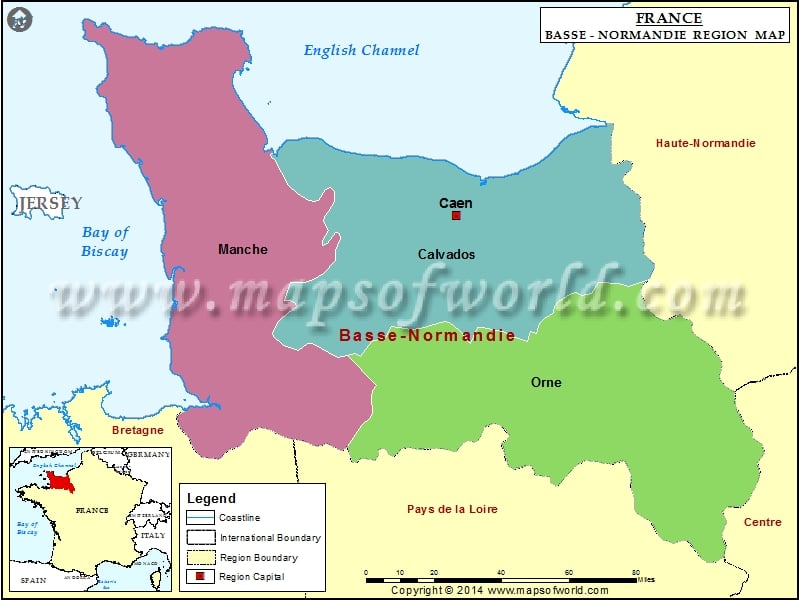BASSE – NORMANDIE
The French Metropolitan Region, Basse-Normandie was created in 1956. It came into existence after Normandy region was divided into Basse-Normandie and Haute-Normandie. Basse-Normandie means lower Normandie.
The three departments of this French Metropolitan Region are Calvados, Manche and Orne. The total area covered by Basse- Normandie Region is about 10,857 square miles. The capital of this region is Caen.
The economy of this region is primarily agricultural. The major industries of the region include livestock and dairy farming, textiles and fruit production. Another major industry of Basse – Normandie region is Tourism. The region has direct ferry links to England.
This region suffered badly during World War II. There was tremendous destruction during the Battle of Normandy.
The three main departments of Basse-Normandie are Calvados, Manche and Orne. The region has 11 arrondissements, 141 Cantons and 1,812 Communes. The total land area covered by Basse – Normandie is 17,589 square kilometres.
HISTORY OF BASSE – NORMANDIE
During the Roman era, Basse – Normandie was divided into a number of different city-states. The Franks conquered this region in the 5th century. The Normans devastated the region in the 9th century. During World War II, Operation Overlord’s main thrust was focused on Basse-Normandie.
CULTURE OF BASSE – NORMANDIE
In Basse – Normandie, the regional language spoken is the Norman language. The most evident dialect spoken here is Cotentin. This region has been home to many well-known authors such as Guy de Maupassant, Jules Barbey d’Aurevilly, Marcel Proust and Gustave Flaubert. Alfred Rossel and Louis Beuve are some notable Norman language authors. Music composer Erik Satie was also from Basse – Normandie region.

